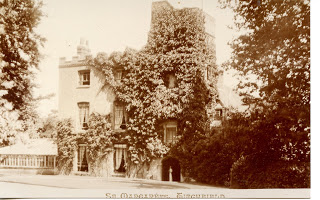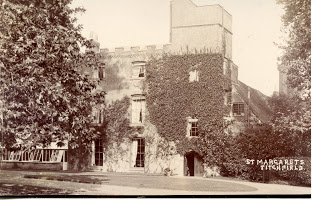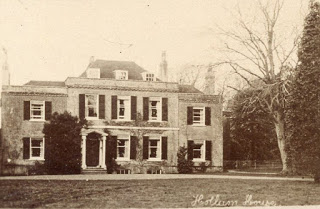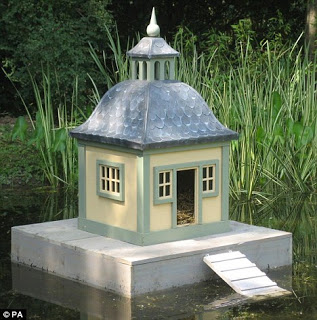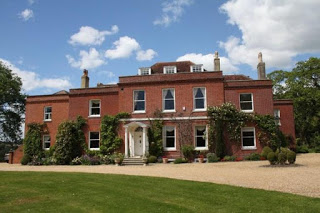A Royal wedding at Titchfield
The occasion was the marriage of Henry VI, to Margaret of Anjou, and the day was 22 April 1445. Margaret was 15 years old and Henry eight years her senior and this day was the culmination of a good deal of diplomatic effort over a protracted period. It was a highly political marriage with a great deal at stake, for the English at any rate, and it turned into a major political miscalculation by the English.
Activity around the idea of a marriage went back to the beginning of 1444 when the English were trying to construct a truce. French resurgence since the time of Joan of Arc made the English hold on Normandy increasingly tenuous and expensive and some breathing room was required. A marriage for Henry, now in his early 20s seems to be a way of securing this. Charles VII of France was amenable to the idea, but he would not propose his own daughters and attention then fell upon Margaret of Anjou. Her father, Rene, duke of Anjou was a cousin to the Valois king but other than that had little to offer. He had wasted a good part of his life pursuing his phantom title to the kingdom of Naples and bankrupted himself in the process. Therefore Margaret came only with a name and a dowry.
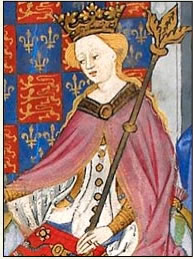
Queen Margaret |
However, the English government was interested. The arrangement promised a two year truce with the prospect of negotiating something of longer duration, and in a spirit of optimism Margaret was married at the church of St Martin at Tours on 24 May 1444 to Henry VI. Standing in as proxy for the king was William de la Pole, earl of Suffolk. Once the diplomatic business of the marriage and the truce was effected, the earl returned to England.
Six months elapsed and Suffolk, newly promoted to marquess, returned to France to escort Margaret to England. He was accompanied by Sir Richard Woodville and his wife Jacquetta. They were to spend some time in France. Margaret was unwell at this time and the winter weather that followed did not allow a crossing so it was not until April of the following year that they were able to cross the Channel.
The party landed at Porchester on 9 April but Margaret was again unwell. It seems to have been something more than sea-sickness as it was described as caused 'of the labour and indisposition of the sea by occasion of which the pocks broke out upon her.' Whatever the complaint, it kept her down for seven days.
The chroniclers are vague about what happened to her. Gregory say that she went to Hampton (Southampton) to rest in God's House, before returning to Titchfield. Gregory says that she went to Southwell (probably meaning Southwick) and Fabyan's Chronicle also records that they were married at Southwick. It may be hard to make sense of all this. Porchester had been converted to a royal palace by Richard II and was perfectly able to accommodate large retinues. It was a practical place to house Margaret's party. There was a connection with the Priory of Southwark since it was at one time within the walls of Porchester Castle until they decamped for their own place a few miles north in the middle of the 12th century and it is possible that Henry himself was staying there. It would make better sense for him to be lodging at Titchfield; otherwise why hold the ceremony there rather than Southwick? Margaret may have been taken to God's house at Southampton because there were men there who could minister to her sickness. She would have been taken by water (by far the fastest way to travel) and returned to Porchester ready to progress to Titchfield.
Initially the marriage was considered a success by the English public since it promised years of peace in the future, but it quickly unravelled. In July a French embassy came to England to discuss a further truce and of course they wanted something in return. The County of Maine, at that time a buffer state between French Anjou and English Normandy, was desired by the French. Both Henry and Margaret, already asserting herself, were party to the negotiations and Henry gave a private undertaking to cede Maine to France in return for a 20 year truce. Suffolk and a few others were involved but the treaty was a secret one and by 22 December Henry agreed in a letter to surrender Maine by 30 April 1446.
Had this resulted in the intended peace the trade may not have been such a bad one but the Maine garrison, who had not been consulted or informed, refused to surrender. Charles chose to consider this a breach of the treaty and marched into Maine in February 1448. Two weeks later it was his. The following year he marched into Normandy and within two months had taken Rouen. Everything was quickly lost and England's presence in France was now reduced to the Pale of Calais.
There is little trace of the abbey today. It was acquired by Sir Thomas Wriothesly, later Baron Titchfield and later still earl of Southampton in 1539 and he immediately set about converting the abbey into a splendid Tudor country house. Of that only the gatehouse and some walls survive.
There is a local legend that Margaret and her retinue crossed the River Meon at the bottom of Fishers Hill and indeed this bridge is often referred to as the"Anjou Bridge" today. This stone bridge dates from 1625 and doubtless there were earlier wooden bridges at this narrow crossing. There is no documentary evidence that I know of to establish this bridge as the crossing, one way or the other, but sometimes local legends are important.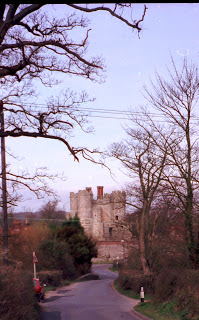
The "Anjou Bridge" with Titchfield Abbey in the background. |
